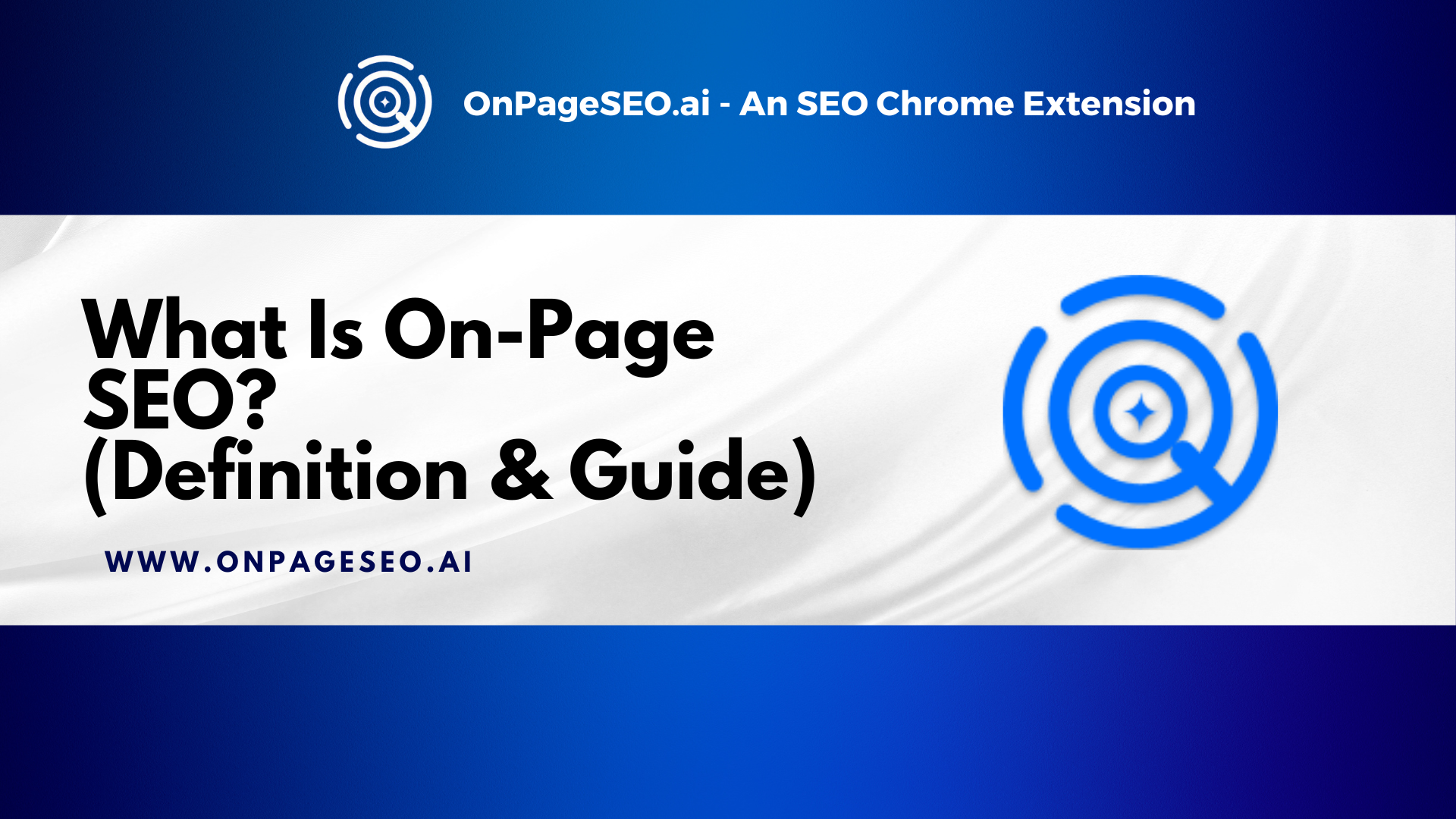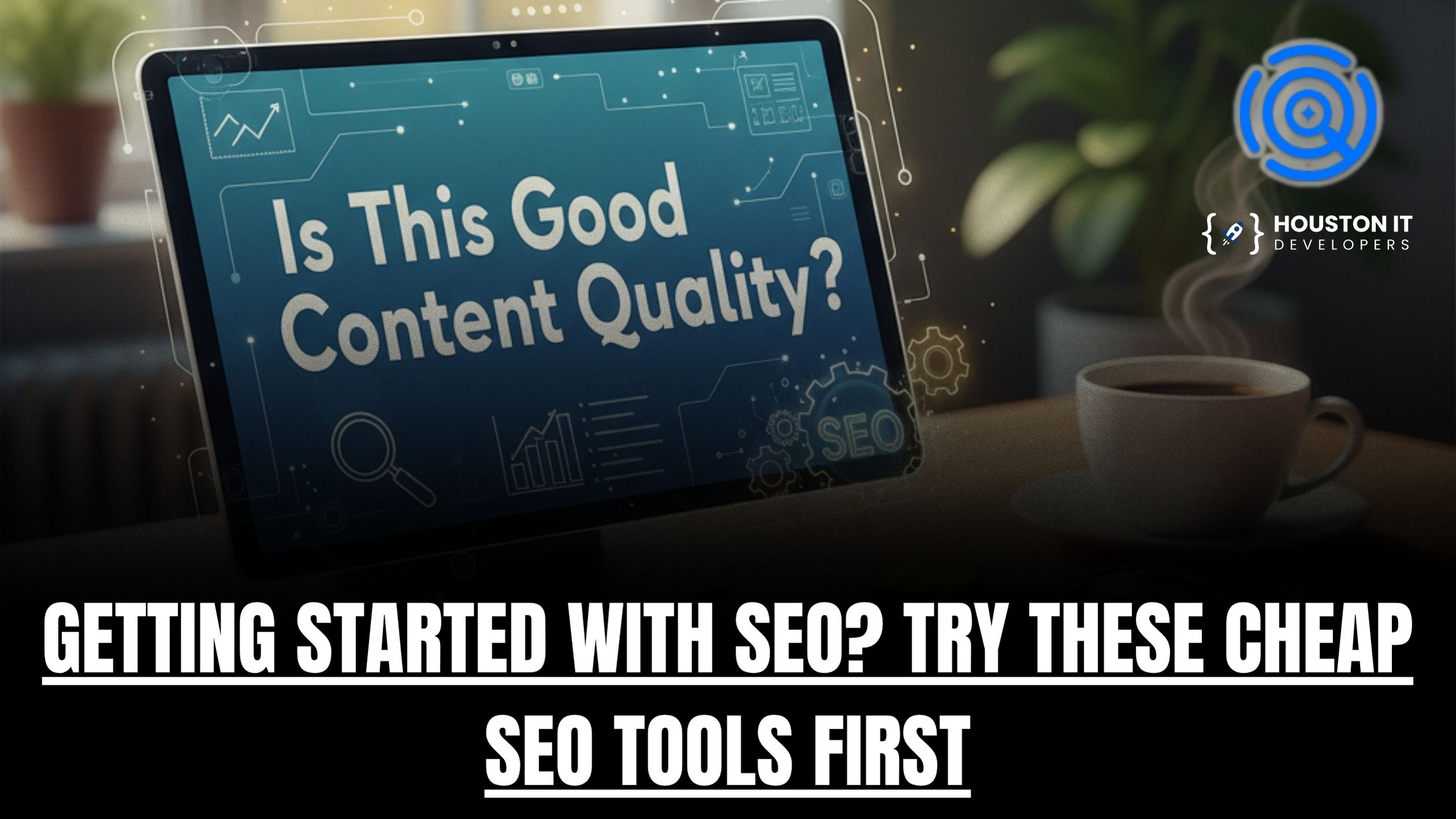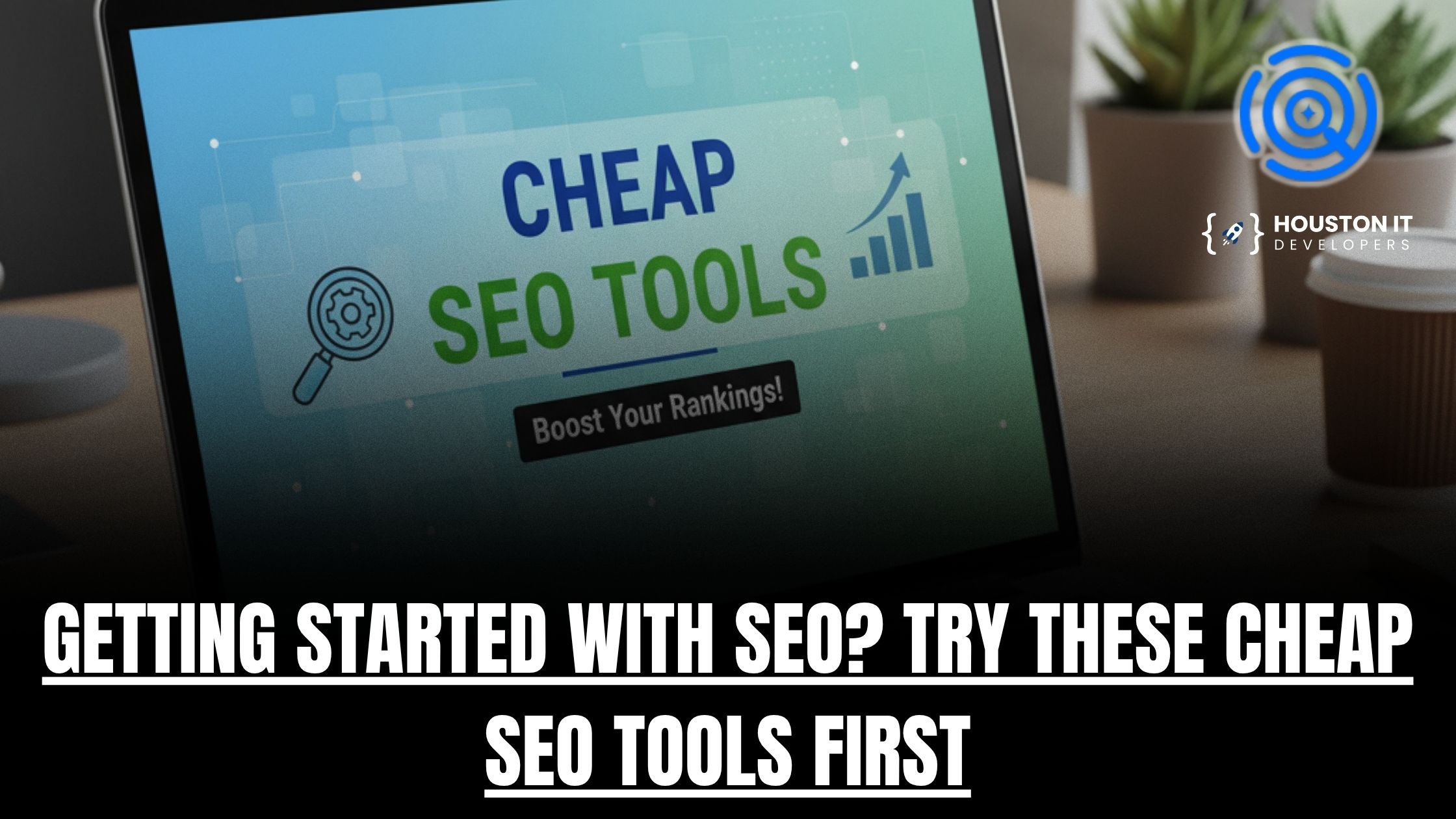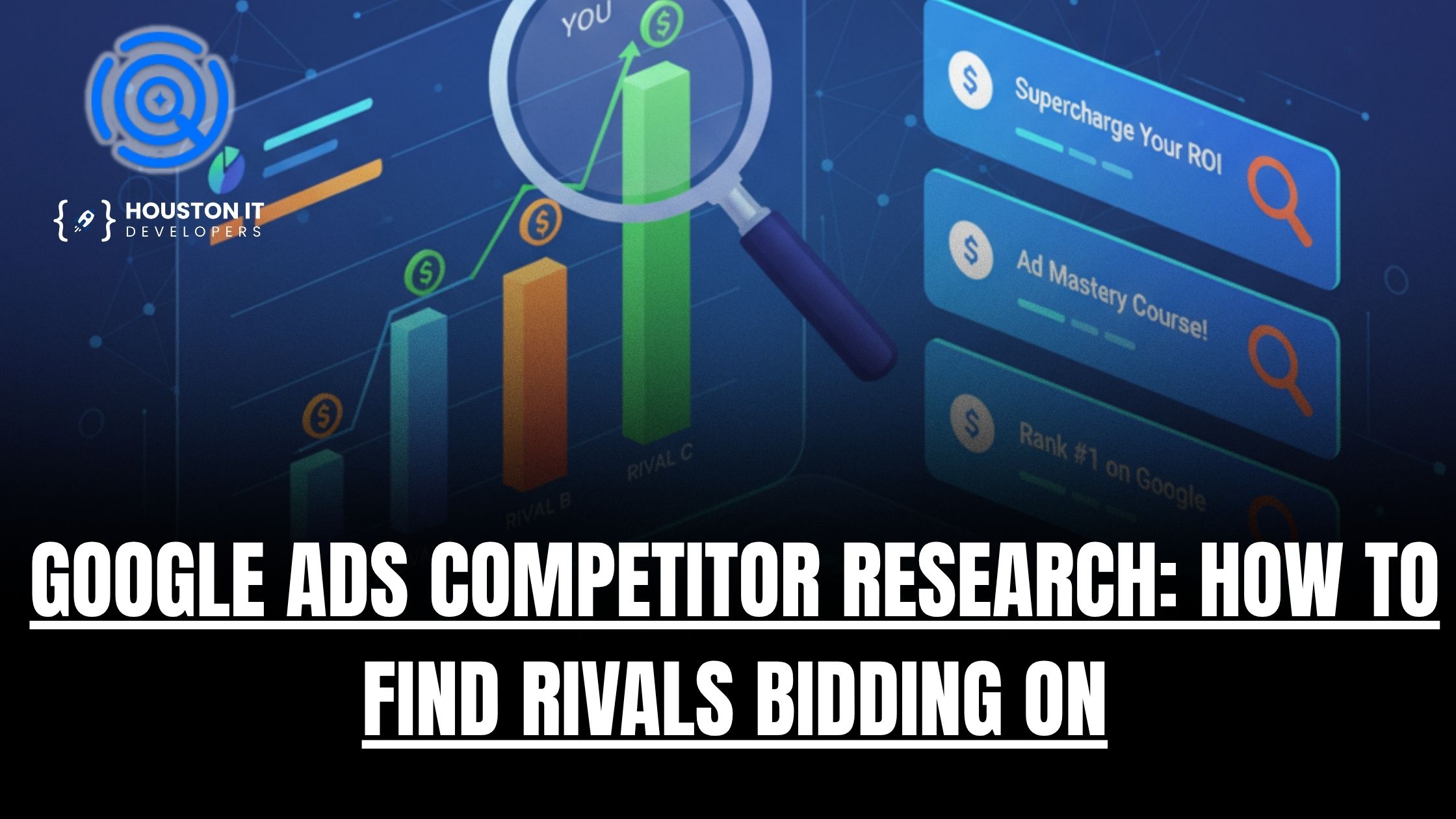Why do some websites dominate search results while others barely get noticed? The secret lies in On-Page SEO—the foundation of higher rankings and increased traffic. Studies show that the top organic search result gets 39.8% of clicks, making On-Page SEO a critical factor for visibility. Additionally, with 92.3% of users browsing on mobile devices, failing to optimize for mobile can cost you valuable traffic.
The problem? Many businesses overlook essential SEO On-Page Optimization techniques, leaving rankings and conversions on the table. How to do On-Page SEO correctly means optimizing content, structure, and technical elements to improve both user experience and search engine understanding.
In this blog post, we’ll explore On-Page SEO best practices, provide an On-Page SEO checklist, and discuss the latest strategies for On-Page SEO for 2025 to help you stay ahead in search rankings.
Understanding On-Page SEO
What is On-Page SEO? It refers to the practice of optimizing individual web pages to enhance search engine rankings and drive relevant traffic. SEO On-Page Optimization focuses on elements within your control, such as high-quality content, strategic keyword placement, meta tags, internal linking, page speed, and mobile responsiveness. These factors work together to help search engines better understand your content while improving user experience.
Unlike Off-Page SEO, which relies on external signals like backlinks and social shares, On-Page SEO allows you to directly influence how both search engines and visitors perceive your website. By following an On-Page SEO checklist, you can ensure every page is structured for maximum visibility and engagement.
Why On-Page SEO Matters for Rankings
Search engines like Google use advanced algorithms to determine a page’s relevance and quality. Proper On-Page SEO best practices ensure your content aligns with search intent, making it more likely to rank higher in results. Optimizing elements like headings, keyword usage, and page structure helps search engines crawl and index your pages efficiently.
Beyond rankings, On-Page SEO also enhances user experience (UX). Faster loading times, mobile-friendly design, and well-organized content improve engagement metrics like click-through rates (CTR) and dwell time—both key ranking factors.
As we move forward, implementing On-Page SEO for 2025 means staying ahead of evolving search trends. This includes optimizing for voice search, leveraging structured data, and ensuring mobile-first indexing compliance. By mastering how to do On-Page SEO, you create a website that not only ranks well but also provides real value to users.
Key Elements of On-Page SEO
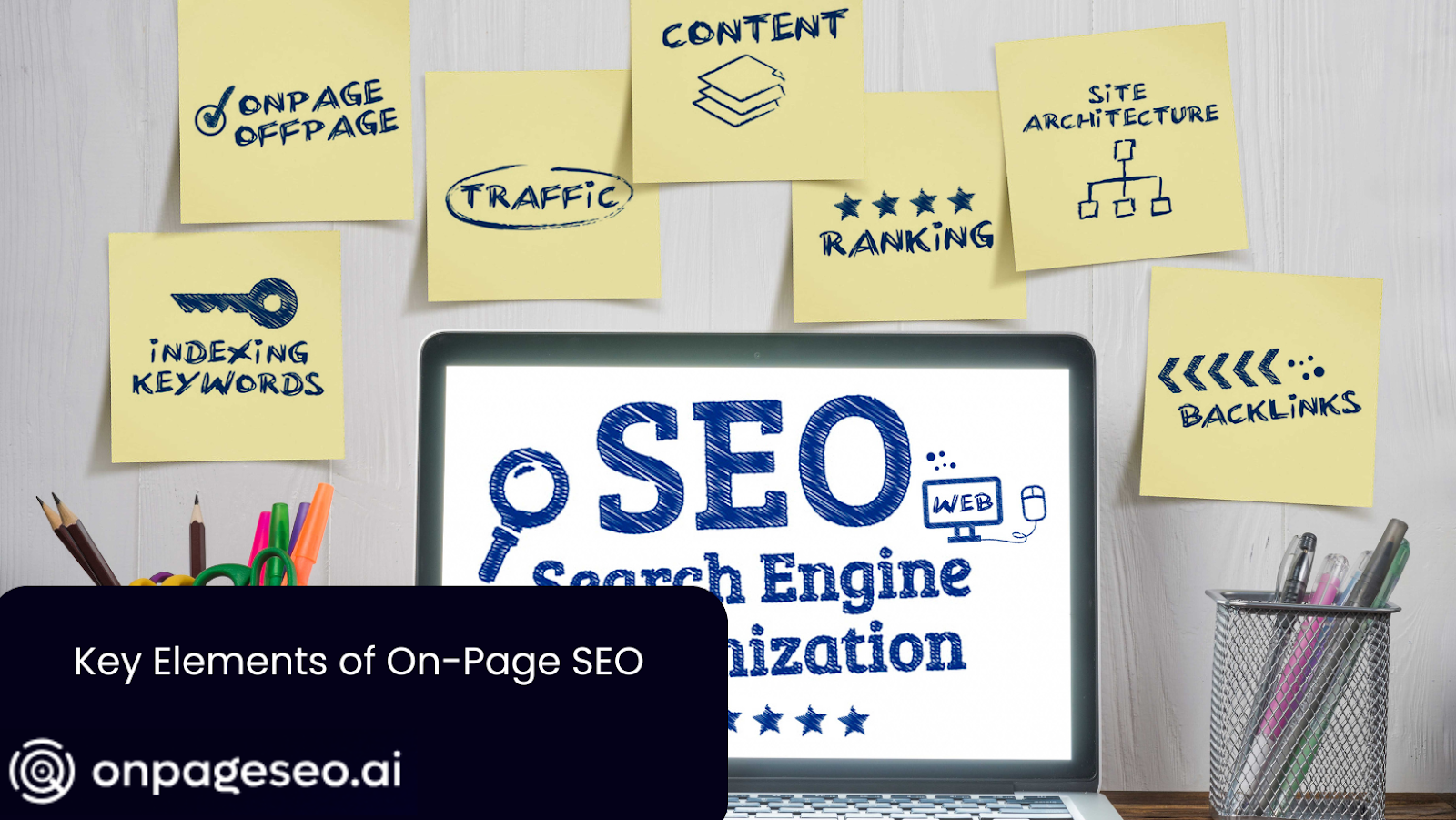
Effective SEO On-Page Optimization is more than just inserting keywords—it’s about structuring your content and website to align with search engine algorithms while delivering an exceptional user experience. Mastering how to do On-Page SEO requires attention to several critical elements, each playing a vital role in rankings. Below is a refined On-Page SEO checklist to help you optimize your pages for maximum visibility.
1. High-Quality, Relevant Content
Content is the backbone of On-Page SEO best practices, and search engines prioritize pages that provide genuine value to users. To rank competitively, your content must:
- Satisfy user intent by addressing their queries comprehensively.
- Be original, well-researched, and engaging, offering insights that competitors may overlook.
- Incorporate LSI keywords (Latent Semantic Indexing) naturally to reinforce topic relevance without overstuffing.
- Enhance readability with proper formatting—concise paragraphs, bullet points, and multimedia elements improve user retention and dwell time.
2. Strategic Keyword Placement
Keyword optimization is at the core of how to do On-Page SEO effectively. Search engines analyze keyword placement to determine relevance, so proper usage is essential. To maximize impact, place primary and secondary keywords in:
- Title tags to establish the page’s main topic.
- The first 100 words to signal relevance early on.
- H1, H2, and H3 headings to create a structured and scannable hierarchy.
- Meta descriptions to improve search engine click-through rates (CTR).
- Image alt text to optimize visuals for search and accessibility.
- SEO-friendly URLs, ensuring they remain concise, descriptive, and keyword-rich.
By implementing these On-Page SEO best practices, you create content that not only ranks well but also delivers a seamless, user-friendly experience—boosting both engagement and conversions.
3. Optimized Title Tags and Meta Descriptions
Title tags and meta descriptions play a crucial role in SEO On-Page Optimization, directly impacting your page’s click-through rate (CTR) and search engine rankings. These elements provide users and search engines with a concise summary of your content, influencing whether someone clicks on your page or a competitor’s.
To optimize title tags effectively:
- Keep them under 60 characters to ensure they display properly in search results.
- Place primary keywords naturally at the beginning of the title for better visibility.
- Make them compelling and user-focused—titles should be engaging while accurately reflecting the page’s content.
Meta descriptions should also follow best practices:
- Limit them to 160 characters to avoid truncation in search results.
- Incorporate primary and secondary keywords while keeping the text natural and persuasive.
- Use action-driven language to encourage users to click, such as “Learn more,” “Discover,” or “Get started today.”
An optimized title and meta description not only improve rankings but also drive more qualified traffic to your website. If you’re dealing with duplicate titles in Yoast, check out “How to Fix Two Titles in Yoast and Optimize Your SEO“ to learn how to resolve the issue and enhance your site’s visibility.
4. Proper Use of Headings (H1, H2, H3, etc.)
Headings are essential for both SEO On-Page Optimization and user experience. They help structure content, making it easier for search engines to crawl and users to scan. Proper heading usage ensures logical content flow and reinforces keyword relevance without over-optimization.
Best practices for heading structure:
- Use one H1 tag per page, as this signals the main topic of the content to search engines.
- Organize sections with H2, H3, and H4 tags to create a clear hierarchy. H2 tags should represent main topics, while H3s and H4s break down subtopics.
- Ensure headings include keywords naturally, but avoid keyword stuffing—clarity and readability should always come first.
Well-structured headings improve how to do On-Page SEO correctly by making content scannable, engaging, and optimized for both search engines and readers. This is necessary if you want to know what is on-page SEO.
5. SEO-Friendly URLs
A well-structured, SEO-friendly URL improves both search rankings and user experience by making it easier for search engines and visitors to understand what a page is about. URLs should be concise, descriptive, and keyword-optimized to enhance their effectiveness.
Best practices for SEO On-Page Optimization in URLs:
- Keep URLs short and meaningful, ideally under 75 characters for readability.
- Use hyphens instead of underscores or spaces to separate words, as search engines treat hyphens as word dividers.
- Avoid special characters, dynamic parameters, or unnecessary numbers, which can make URLs confusing and less readable.
- Incorporate primary keywords naturally to reinforce page relevance without overstuffing.
Example of SEO-Friendly URLs
By optimizing URLs, you create a cleaner structure that benefits both On-Page SEO best practices and user experience.
6. Internal Linking for Better Navigation
Internal linking is a fundamental aspect of how to do On-Page SEO effectively. It improves crawlability, enhances site structure, and distributes link equity across your website, helping both users and search engines discover related content.
A strong On-Page SEO checklist for internal linking includes:
- Linking to authoritative, high-value pages within your site to guide users to relevant resources.
- Using descriptive anchor text that clearly indicates what the linked page is about rather than generic phrases like “click here.”
- Ensuring internal links are contextually relevant to the content, improving engagement and reducing bounce rates.
Example of Effective Internal Linking
| ❌ Bad Example | ✅ Good Example |
| Click here to read more about SEO strategies. | Explore our detailed guide on On-Page SEO best practices for better rankings. |
| Learn more about this topic here. | Learn more in our On-Page SEO checklist to optimize your site. |
| More details available at this link. | Get insights on SEO On-Page Optimization in our latest blog. |
Strategic internal linking, combined with effective On-Page SEO, is a key aspect of what is on-page SEO. It ensures a smooth and intuitive experience for your website visitors while also boosting your page’s authority and keyword focus.
7. Outbound Links to Authoritative Sources
Outbound links, or external links, play a crucial role in SEO On-Page Optimization by signaling credibility and relevance to search engines. Linking to high-quality, authoritative sources enhances your content’s trustworthiness and provides users with additional valuable information.
Best practices for using outbound links effectively:
- Choose reputable sources – Link to well-established websites, such as industry leaders, government pages, or academic publications, to ensure credibility.
- Use a mix of “dofollow” and “nofollow” links – While “dofollow” links pass SEO value, use “nofollow” attributes when linking to untrusted or user-generated content to avoid potential ranking penalties.
- Ensure links open in a new tab – Prevent users from leaving your site by setting outbound links to open in a new tab, maintaining engagement while providing additional resources.
- Keep links relevant – Only link to content that enhances your topic and provides further context, avoiding excessive or unnecessary external links.
On-Page SEO best practices for outbound links are an essential part of what is on-page SEO, helping to improve credibility, user experience, and search engine trust.
8. Image Optimization and Alt Text
Images are essential for engaging content, but if not optimized correctly, they can slow down your website and negatively impact your On-Page SEO checklist. Proper image optimization improves page speed, accessibility, and search engine rankings.
Best practices for how to do On-Page SEO with images:
- Compress image files – Use tools like TinyPNG or ShortPixel to reduce file sizes without sacrificing quality.
- Use descriptive alt text – Alt text improves accessibility for visually impaired users and helps search engines understand image content.
- Rename image files with relevant keywords – Instead of generic filenames (e.g., “IMG1234.jpg”), use keyword-rich names (e.g., “on-page-seo-checklist.jpg”).
- Enable lazy loading – This feature delays loading images until they are needed, improving page speed and user experience.
- Choose the right file format – Use WebP for modern, lightweight images, or PNG/JPEG when necessary for clarity.
Optimizing images with On-Page SEO best practices improves site speed, user experience, and overall search performance, which are key aspects of what is on-page SEO.
9. Page Speed and Mobile Optimization
Page speed and mobile-friendliness are critical factors in SEO On-Page Optimization. A slow website frustrates users, leading to higher bounce rates, while a poor mobile experience can drastically reduce engagement. Since Google prioritizes fast-loading, mobile-optimized sites, improving these aspects is essential for ranking well.
A website that loads quickly enhances user experience and increases the likelihood of conversions. Optimizing speed involves several technical and on-page improvements:
- Use a lightweight theme – Heavy themes with excessive scripts slow down page speed. A clean, well-coded theme improves performance.
- Compress images – Large images consume bandwidth and increase load time. Use modern formats like WebP and enable lossless compression.
- Minify CSS, JavaScript, and HTML – Removing unnecessary spaces, comments, and redundant code speeds up rendering.
- Enable browser caching – Storing static resources locally helps returning visitors experience faster load times.
- Implement a Content Delivery Network (CDN) – Distributes content across multiple servers to reduce latency and improve access speeds globally.
- Reduce server response time – Upgrade hosting, optimize databases, and limit excessive HTTP requests to ensure the server responds faster.
Mobile Optimization Essentials
With over 92.3% of users accessing the internet via mobile devices, ensuring a smooth mobile experience is no longer optional.
- Ensure a responsive design – The site layout should automatically adjust to different screen sizes, ensuring readability and usability.
- Prioritize mobile-first indexing – Google ranks websites based on their mobile versions, so design with mobile usability in mind first.
- Avoid intrusive pop-ups – Pop-ups that cover content can frustrate mobile users and lead to penalties from Google.
- Optimize font sizes and button spacing – Text should be legible without zooming, and buttons should be easily tappable without accidental clicks.
- Improve touch interactions – Navigation menus and links should be designed for effortless touch interactions.
A fast, mobile-friendly website not only ranks better but also provides a seamless user experience, reducing bounce rates and improving engagement.
10. Schema Markup for Enhanced Search Visibility
Schema markup is a structured data format that helps search engines understand and display your content in a richer way. It enables SEO On-Page Optimization by enhancing search results with additional details like ratings, prices, event dates, and FAQs. Implementing schema markup increases click-through rates (CTR) and improves visibility.
Here are the key schema types and their benefits:
- FAQ Schema – Displays frequently asked questions directly in search results, increasing visibility and engagement.
- Review Schema – Adds star ratings and user feedback to product or service pages, building trust and improving CTR.
- Event Schema – Highlights event details, including location, date, and time, making it easier for users to find relevant events.
- Breadcrumb Schema – Shows the page hierarchy in search results, enhancing navigation and reducing bounce rates.
- Product Schema – Provides structured information about products, including price, availability, and reviews, improving e-commerce visibility.
Implementation tips that you can do when doing on-page SEO:
- Use JSON-LD format – This is Google’s preferred method for implementing schema markup, as it is easier to manage and update.
- Test markup with Google’s Structured Data Testing Tool – Ensures proper implementation and prevents errors that could affect rankings.
- Keep markup accurate and relevant – Inconsistent or misleading schema data can lead to penalties.
- Regularly update schema – Outdated structured data can mislead search engines and users, reducing its effectiveness.
By integrating structured data into your website, you improve its chances of appearing in rich snippets, featured snippets, and knowledge panels, which enhances search presence and boosts organic traffic.
On-Page SEO Best Practices for 2025
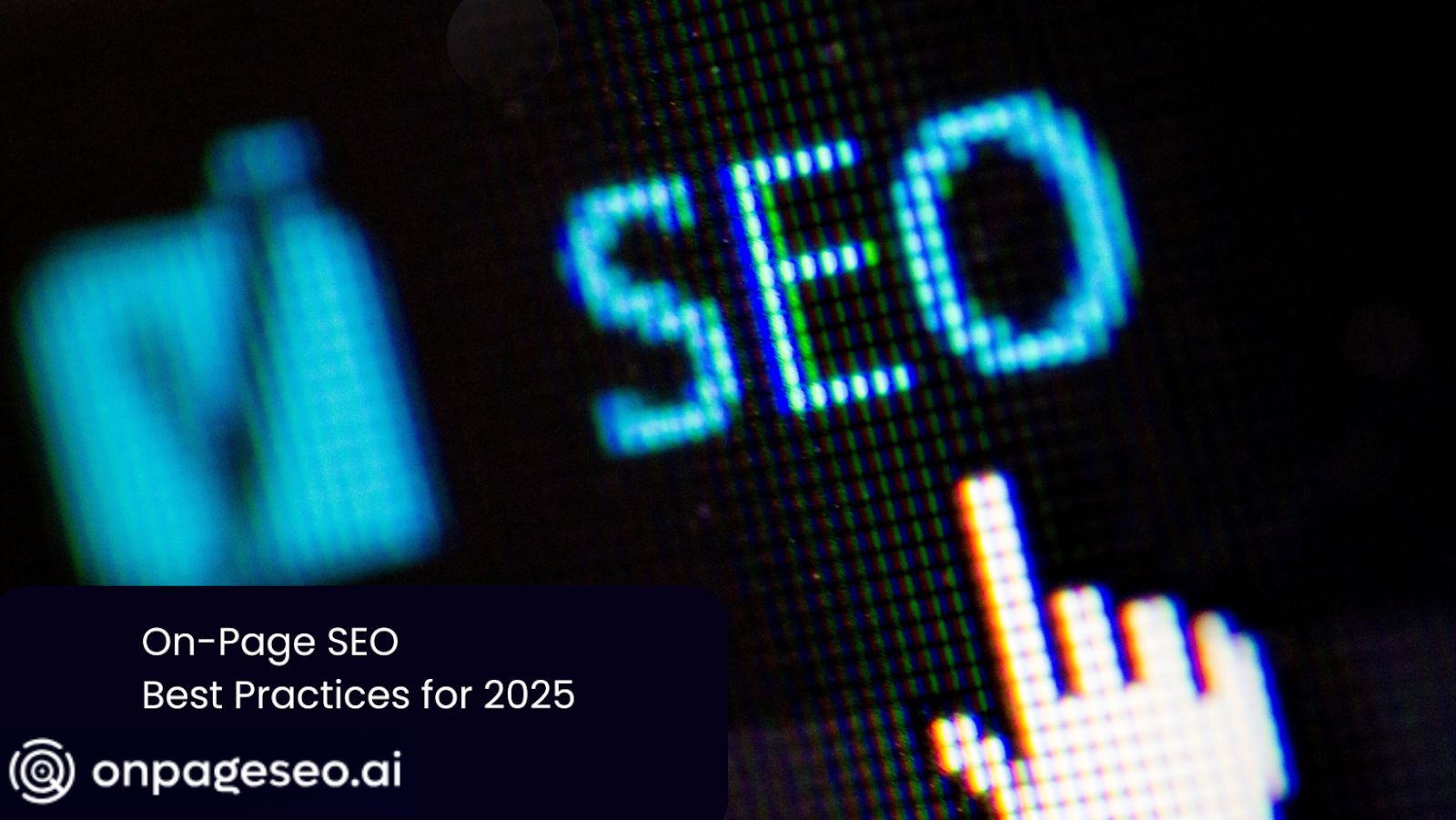
Search engines continuously refine their algorithms, and On-Page SEO for 2025 will demand a more strategic approach. Staying competitive means leveraging new technologies, enhancing user experience, and aligning content with search intent. Here’s what to focus on:
1. AI-Driven Content Optimization
Artificial Intelligence is revolutionizing content creation and SEO strategies. AI-powered tools help analyze search trends, suggest improvements, and optimize content structure for better rankings. SEO On-Page Optimization in 2025 will rely heavily on AI for:
- Identifying content gaps and recommending relevant topics.
- Enhancing readability and natural keyword placement.
- Generating data-driven insights to refine SEO strategies.
One tool that stands out in this AI-driven landscape is the OnPageSEO.ai Chrome extension. Designed to streamline On-Page SEO best practices, it helps users understand what is on-page SEO and implement it effectively.
OnPageSEO.ai Chrome Extension: AI-Powered Optimization
The OnPageSEO.ai Chrome extension is a game-changer for SEO On-Page Optimization, offering instant insights and AI-driven recommendations to streamline how to do On-Page SEO effectively. With real-time audits and actionable fixes, this tool helps you optimize every element of your page for better rankings and search visibility.
- Instant On-Page SEO Audit – One-click health score with AI-powered fixes for titles, meta descriptions, and indexability.
- Header Structure SEO Audit – Analyze and optimize H1-H6 tags with an interactive header map and issue detection.
- SEO Link Audit – Comprehensive internal and external link analysis with anchor text categorization.
- Image SEO Audit – Optimize images with alt-text analysis, WebP conversion, and SEO suggestions.
- Keyword Analysis – Track keyword density, distribution, and word count, with CSV export and advanced filtering.
- Character Counter – Optimize titles and meta descriptions with precise length tracking.
With color-coded suggestions and AI-driven enhancements, OnPageSEO.ai ensures your content is fully optimized for 2025 and beyond.
2. Voice Search Readiness
With the increasing use of smart assistants like Siri and Alexa, optimizing for voice search is essential. Voice queries tend to be more conversational and longer than typed searches. How to do On-Page SEO for voice search includes:
- Using natural language and question-based keywords.
- Structuring content with FAQs to match spoken queries.
- Prioritizing local SEO, as many voice searches involve location-based intent.
3. Core Web Vitals and Technical Performance
Google’s Core Web Vitals remain a significant ranking factor, emphasizing user experience. To meet On-Page SEO best practices, websites must:
- Improve Largest Contentful Paint (LCP) by optimizing images and server response times.
- Reduce First Input Delay (FID) by minimizing JavaScript and improving interactivity.
- Enhance Cumulative Layout Shift (CLS) by stabilizing visual elements to prevent unexpected shifts.
4. User-First Content and E-E-A-T Principles
High-quality content remains the foundation of SEO On-Page Optimization. Google prioritizes sites that demonstrate Experience, Expertise, Authority, and Trustworthiness (E-E-A-T). To align with this standard:
- Write in-depth, fact-checked, and well-structured content.
- Use credible sources and authoritative outbound links.
- Improve readability by breaking up text with headings, bullet points, and visuals.
5. Video and Interactive Media for Engagement
User engagement metrics, such as dwell time and click-through rates, influence rankings. Incorporating interactive elements can boost engagement and enhance SEO performance:
- Embed videos to provide additional context and improve retention.
- Use interactive infographics and polls to keep users engaged.
- Optimize multimedia elements by compressing files and using alt text for accessibility.
As search engines become more sophisticated, On-Page SEO in 2025 will be about balancing technical improvements with user-centric content. Adapting to these trends ensures better rankings, increased visibility, and a superior user experience.
FAQs
What is the difference between on-page SEO and off-page SEO?
On-page SEO refers to optimizations made directly on your website, such as content, headings, meta tags, internal linking, and image optimization. Off-page SEO focuses on external factors like backlinks, social signals, and brand mentions that influence your site’s authority and ranking.
What is on-page SEO vs local SEO?
On-page SEO improves your website’s visibility by optimizing content, structure, and keywords for search engines. Local SEO, on the other hand, targets geographically relevant searches by optimizing for Google My Business, local citations, and location-based keywords to attract nearby customers.
What is on-page SEO vs technical SEO?
On-page SEO involves content and keyword optimization, while technical SEO focuses on backend elements like site speed, crawlability, mobile-friendliness, and structured data. Both work together to enhance your website’s performance and search rankings.
Final Thoughts on SEO On-Page Optimization
Mastering On-Page SEO is essential for achieving higher search rankings, increasing organic traffic, and providing a seamless user experience. Understanding what is on-page SEO and implementing best practices like content optimization, page speed improvements, mobile responsiveness, and structured data will keep your website competitive in 2025 and beyond.
As search engines continue to evolve, staying ahead requires adapting to new trends like AI-driven content optimization, voice search readiness, and schema markup implementation. Prioritizing user intent, engagement, and technical excellence will not only boost rankings but also establish your site as a trusted authority in your industry.
Want to simplify your On-Page SEO efforts? Try the OnpageSEO.ai Chrome extension to get real-time SEO suggestions, content analysis, and optimization tips directly in your browser. Download it now and start improving your rankings effortlessly!
